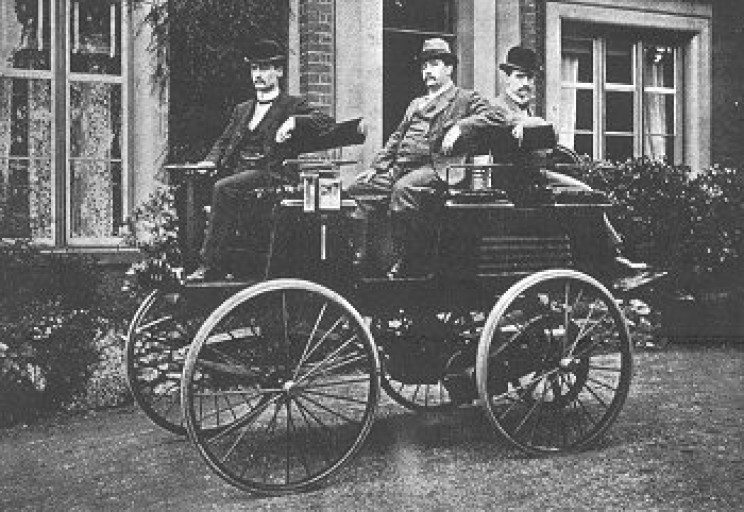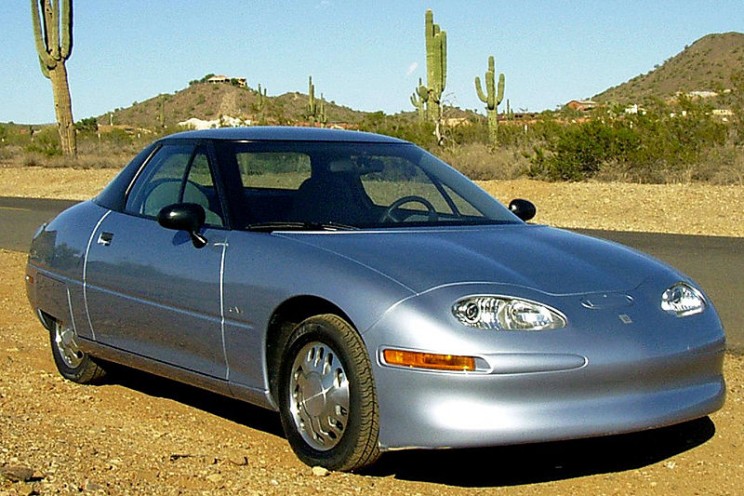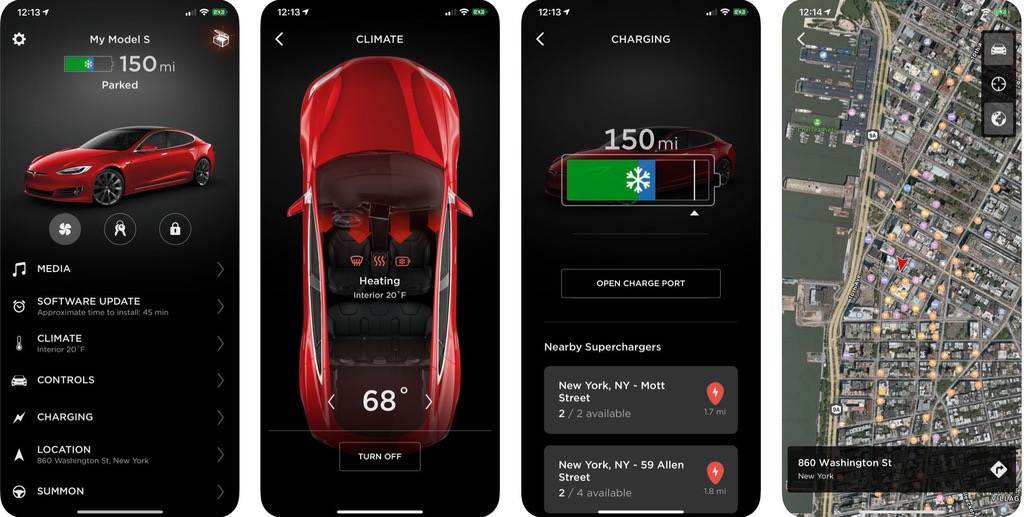
Abstract
The electric car adoption has been greatly accelerated by a startup company named Tesla. This upstart car company, as of July 1, 2020, is the most valuable car company in the world, and has redefined electric cars.
But why is Tesla so popular? How is Tesla’s approach different from an internal combustion car? Isn’t an electric car just a different motor in a normal car? How does driving an electric car differ from driving an ICE (internal combustion engine) car? How is an electric car different or the same as an ICE car?
Electric Car History
It wasn’t until 1884 that British Inventor, Thomas Parker (who also electrified the London Underground) built the first production electric car. Parker powered his car using his own specially-designed, rechargeable high-capacity batteries. A Brief History and Evolution of Electric Cars

Electric cars were among the preferred methods for automobile propulsion in the late 19th and early 20th century, providing a level of comfort and ease of operation that could not be achieved by the gasoline cars of the time. The electric vehicle stock peaked at approximately 30,000 vehicles at the turn of the 20th century. Electric Car History
Climaxing with an electric car setting a world speed record on December 18th, 1898. A Brief History and Evolution of Electric Cars
Electric cars started to lose out the the ICE (Internal Combustion Engine) cars once the electric starter was introduced in 1912, before that ICE engines were hand cranked.

By 1910, most electric car manufacturers had either gone out of business or stopped production completely. The technology persisted for specialist uses like forklift trucks, milk floats in the UK, golf carts, and some niche vehicles, like the Henney Kilowatt, but electric vehicles generally stayed on the sidelines until their renaissance later in the 20th Century. A Brief History and Evolution of Electric Cars

The General Motors EV1, was developed in the mid-1990s. The EV1 was the first electric car to be mass-produced (and purpose-built) in the modern era by a major car manufacturer. A Brief History and Evolution of Electric Cars

Tesla Motors produced its very first electric car, the Roadster, in 2008. This vehicle was a revolution in the modern age of the electric vehicle and featured cutting-edge battery technology and an electric powertrain.
The original Roadster was a battery electric vehicle (BEV) and was the first highway-legal, serial production, all-electric car to ever use a lithium-ion battery as a power source. It is also the first all-electric car capable of traveling more than 320 kilometers ( 199 Miles ) per charge.
It could also reach an incredible top speed of 200 km/h (124 mi/h). A Brief History and Evolution of Electric Cars
How do Electric Motors work
Lets start off by looking at how the electric motor works.
Basic Principles of Electric Motors
Traction Motor
Lets watch the beginning of this video about a traction motor. This is a 4500 HP AC Traction motor as used in a diesel locomotive.
What’s inside a Tesla?
Are Tesla’s safe?
ICE vs EV
In this section I am going to pick some subjects that define the differences between ICE and EV vehicles. Once we get through what I want emphasize, your question will drive the rest of the discussion.
Batteries vs Petrol
For ICE vehicles, most people go to their local service station to fill up the tank. The mileage between fill ups is usually consistent. But for batteries the mileage can change based on the weather. Heat for the passengers is electric, so that reduces the range. But you can warm the car up before leaving the house and use wall current (See On Line all the Time below.)
Fueling an EV
Charging a battery is often done at home. If you have a garage it is convenient to have a level 2 charger available. The charger designation are Lever 1 uses 120 volts at 12 amps, Level 2 uses 240 volts and 30 amps, and Level 3 uses 480 volts providing 150 kilowatts (300 amps). Having a level 2 charger in you home means that at the end of the day, you plug in the car and it charges over night. So you start each day with a full charge.
Tesla has also install 25000+ super charger around the country. These level 3 chargers can add 200 miles to the battery in 30 minutes. If you put a destination into the GPS in the Tesla, and the distance exceeds the current charge available, the GPS will book you through a super charger along the way. Most of the super chargers are near a food place, so it is a good place to stop for a bite while your car charges.
Additionally the GPS knows where all the super chargers are and what their current usage is. So if all the spots are taken you will know before you arrive. There is a button the the map to show you where the super chargers and will route you to the one you select.
Engine Efficiency
One interesting difference between an EV and an ICE car is how efficient it is at converting potential energy to actual motion.
Modern gasoline engines have a maximum thermal efficiency of more than 50%,[1] but road legal cars are only about 20% to 35% when used to power a car. Engine efficiency
On the other hand an electric motor is between 85 to 90% efficient.
Consider the Tesla Model S, which has an available 85 kWh battery and a 265 mile range. Consider a similar gas-powered car, which gets 35 mpg. Gasoline contains about 33 kWh of energy per gallon. The Tesla uses 320 Wh/mile of energy (85 kWh/265 miles). The gas powered car uses 940 Wh/mile of energy (33 kWh/35 miles). … the Tesla is using only about a third as much energy as the comparable gasoline-powered car. Electric Car Myth Buster — Efficiency
Route Planning for your trip
If you want to plan your trip with more detailed control over route, such as when to charge, how much charge you have at your destination, you can use the program A Better Route Planner.

Data, Data, Data
One interesting feature of the Tesla is it’s ability to provide data via an API. What this means is that the raw data from your driving can be downloaded through a data interface, and parsed to provide additional information about your car and your driving. I use a website called TeslaFi to view the data.
One pedal driving
One feature of electric vehicles is that the motor can provide both power and breaking. This feature is known a regenerative breaking. Basically the controller turns the motor into a generator. Depending on the strength of the field you can get more of less braking. The upside of regenerative breaking is the breaking puts the power produced back into the battery. On the Tesla the regenerative breaking is strong enough to do the majority of the breaking without using the break pads. The car has a full set of disc breaks and a break peddle just like other cars. But when you let up on the accelerator the regenerative breaking kicks in. Also once you come to a stop, the engine holds the car still, so even if you are on a slope you do not start rolling. This is especially nice when starting on a hill, because the car will only start moving when you press the accelerator. You can turn off this feature if you wish, but why waste the power and the break pads.
Online all the time

One interesting feature of the Tesla is that it is constantly online. This means that the GPS maps, are always current. It also means that the music is streaming so it does not depend on local radio stations.
Another feature of the Tesla is the cell phone app. This has many uses. It can show the current location of the car, unlock the car, open the trunk and other operations. In the winter time you can turn on the heat in the car while you are having breakfast, so when you leave the car is already warm inside. If the car is still connected to the charger when you turn on the heat, it uses the wall current instead of the battery to heat the car. Some additional features using the app is to open your garage door from your smart phone. You can open the windows a crack to allow ventilation. Or honk the car horn or flash the lights, to help you locate your car in a parking lot.
The car comes with 2 RFID key cards, which are the car keys. The cell phone app allows you to link the app on your phone to one of the key cards so it will use the blue tooth to unlock the car when you walk up. It will also allow you to start and drive the car without getting out the key card.
Additionally, since the car is online, you can connect the car to WiFi when it is parked. The system will then automatically do software updates from Tesla. The question of security seems to come up regularly. Is it possible to hack the Tesla? Tesla is offering a reward to anyone who can hack their model 3s. Tesla is challenging hackers to crack its car, and it is putting ~$1 million on the line so the answer is maybe, but Tesla is taking the issue seriously.
Self Driving

NO the model 3 is not yet self driving. The technology is advancing, but for now it is only a goal. But realize that the car was designed to be self driving in the future. What this means is that the computer is capable of driving the car. It also means that the car contains many sensors and cameras. With the sensors, the car is able to continue to improve is safety through software updates. A case in point is how the breaking of the car was improved by a software update, see Tesla’s Quick Fix for Its Braking System Came From the Ether
I look at self driving as a plus for older drivers. The system can already deal with the boring interstate driving. The real challenge comes from trying to anticipate what those crazy humans will do. I look at the possibility of self driving being a good thing to reduce the number of people killed by drunk drivers. Will the autonomous driving ever be perfect? Probably not, neither are human drivers.
One feature I have enabled is a dash cam. This records video in real time from the front, back, and both sides. In case of an accident, I have a video record of what happened.
Longevity of an EV
Elon Musk @elonmusk Apr 13, 2019 Model 3 drive unit & body is designed like a commercial truck for a million mile life. Current battery modules should last 300k to 500k miles (1500 cycles). Replacing modules (not pack) will only cost $5k to $7k.
This makes sense if you look at the parts of the car that wear out. Tires will wear the same as any other car. But the electric motor and controllers do not wear as fast as an ICE car. You do not have the same friction components as in a reciprocating engine. The transmission does not exist. And one more interesting item is that the wiring harness is much simplier, leading to fewer shorted wires. The wiring is a CAN (Controller Area Network) bus is used to communicate between the different parts of the car.
Questions
Written by John F. Moore
Last Revised: Sat 22 May 2021 05:02:42 PM EDT

This work is licensed under a Creative Commons Attribution-NonCommercial-ShareAlike 3.0 Unported License.
